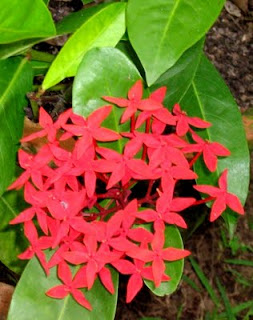Some people call bloggers ‘scavengers of the media’. Never mind that. I am so touched by a news item that was splashed over the electronic and print media that I decided to write about it for the benefit of those who have missed the piece. To illustrate the contrast, I decided to add another story as well.
Sustaining loyalty
The kingdom was lost 62 years back. However, many of the erstwhile subjects and their descendants still have great regard for the Royal Family of Travancore. This was so movingly demonstrated at the
A representative group of about fifty people including men, women and children reached the Palace with hill produces and curios made by them as offerings to the Royal Family. First they paid homage at the tombs of the late Maharaja Sri Chithira Thirunal Bala Rama Varma and his sister Princess Karthika Thirunal Lakshmi Bhai.
They were Kanikars, a tribe that inhabits the Agasthakoodam Biosphere Reserve (ABR) area, about 60km from the State capital. These tribesmen are considered to be experts in the medicinal uses of the nearly 2,000 species of plants that grow in the ABR.
Princess Pooyam Thirunal Gowri Parvathi Bhai received them into the Palace. Later, the present head of the head of the Royal Family, Uthradam Thirunal Marthanda Varma, joined them.
The Kanikars presented the offerings to the royal personages and complained about the problems they were facing. They left after spending about an hour at the Palace. They were given money for travelling expenses and for celebrating Onam, Kerala’s premier festival.
I did not know till yesterday that this ritual is faithfully followed every year.
$1.2 billion Onam
In his column ‘Business Boom’ in the Malayala Manorama today, P. Kishore makes some stunning revelations about the spending habits of Keralities for Onam.
The highlights are:
1. In certain sectors like home appliances including AC, 40% to 60% of the annual sale is during Onam season. The expected turnover is Rs.1000 crores.
2. Gold ornaments business is estimated to be Rs.3000 crores or 25% of the annual sales.
3. Cloth shops rake in 25-30% of their yearly sales during this season. Small change – about Rs.40-60 crore.
4. About 10,000 vehicles are expected to be sold during Onam against 8,750 last season.
5. Then there are the expenses for liquor and food.
According to Kishore, the total expenditure for Onam in Kerala this year would be at least Rs.6000 crores. At Rs.50 to a USD, this works out to USD 1.2 billion. Or, is my calculation wrong? The funding, it seems, comes mostly from personal loans by banks.
Did someone say there is an economic meltdown?
Related posts:
The last of the Travancore Maharajas















